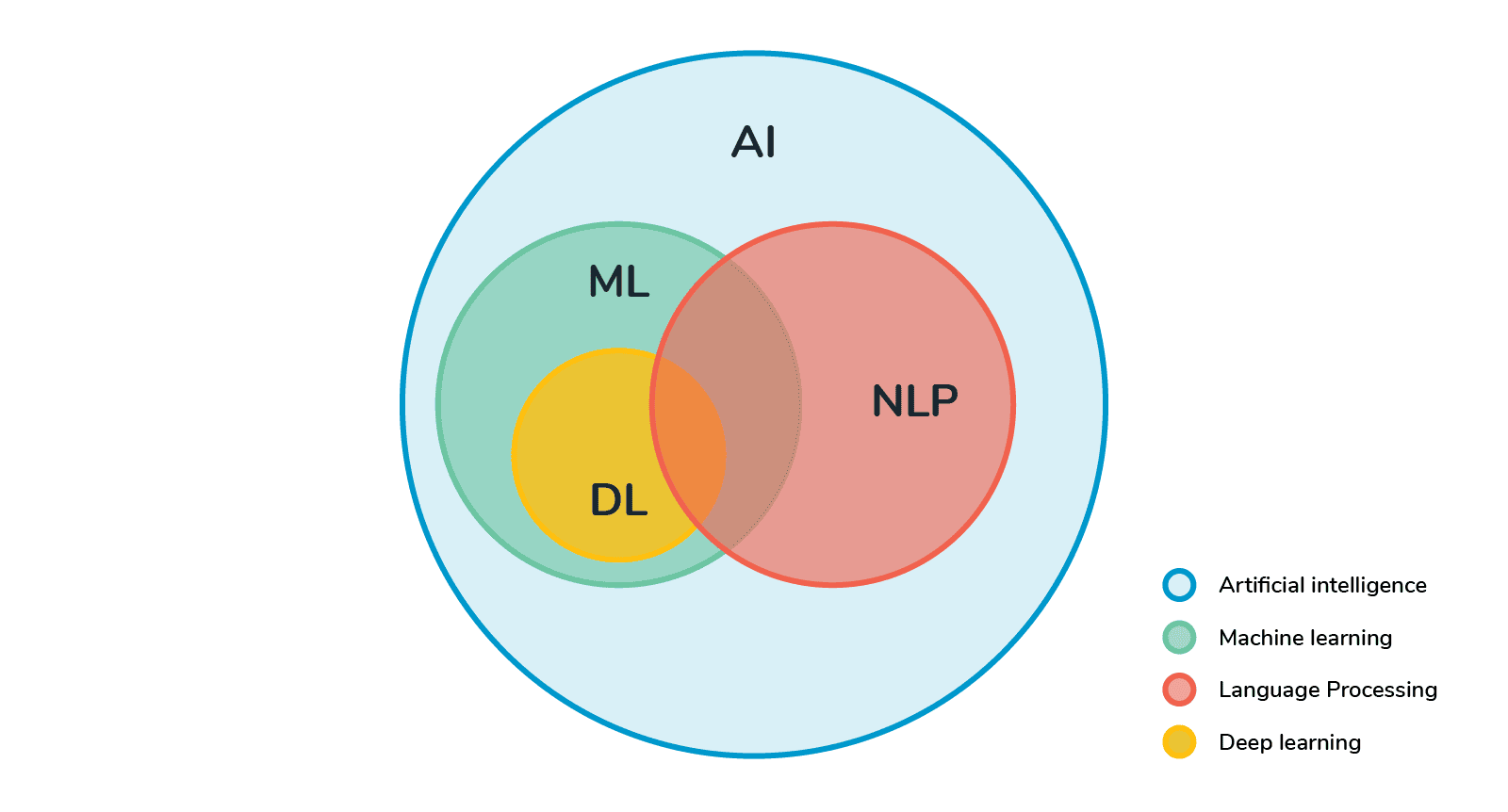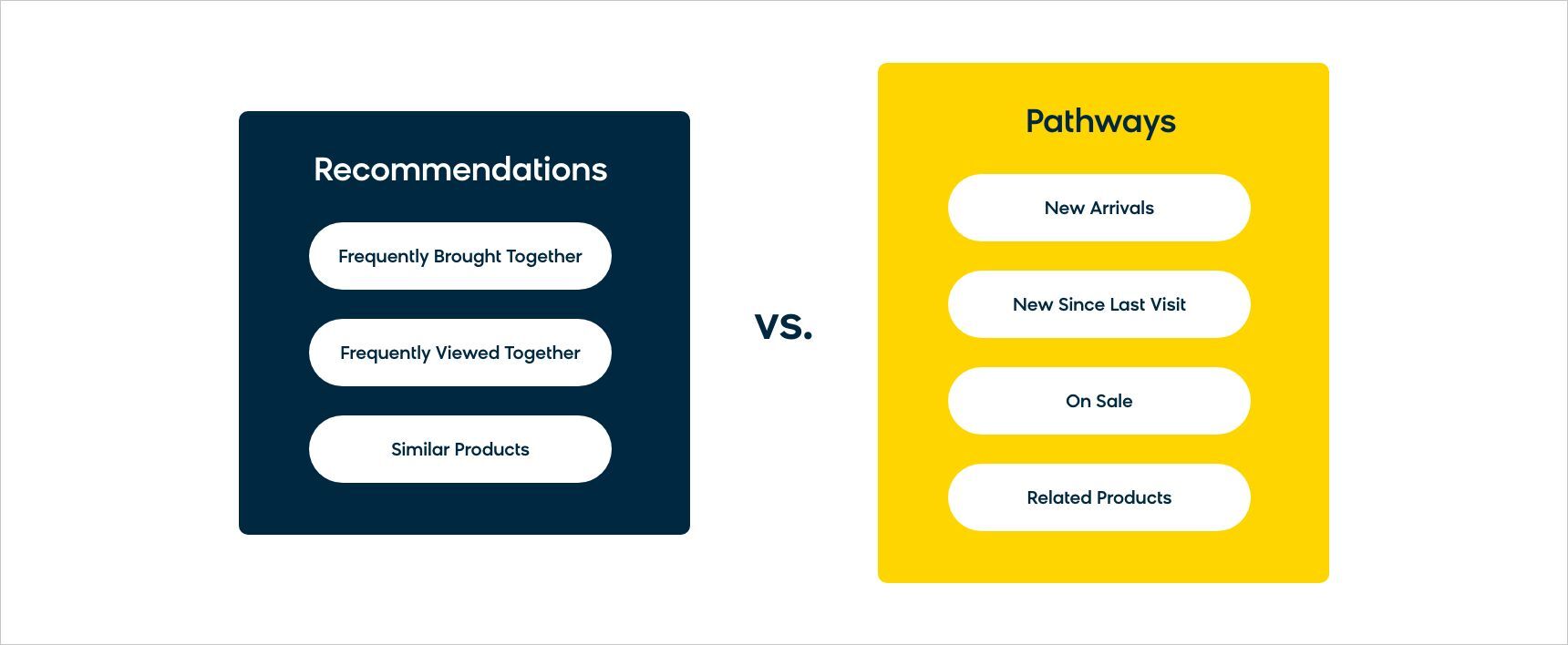Human language in itself is difficult to master. So, it’s no surprise that there can be a general disconnect between computers and humans. Since computers cannot communicate as organically as we do, we might even assume this separation between the two is larger than it actually is.
While computers communicate with one another in code and long lines of ones and zeros, they’ve come to better understand human language with natural language processing (NLP) and machine learning (ML). With these natural language processing and machine learning methods, technology can more easily grasp human intent, even with colloquialisms, slang, or a lack of greater context.
With natural language understanding, technology can conduct many tasks for us, from comprehending search terms to structuring unruly data into digestible bits — all without human intervention. Modern-day technology can automate these processes, taking the task of contextualizing language solely off of human beings. Before diving further into those examples, let’s first examine what natural language processing is and why it’s vital to your commerce business.
What Is Natural Language Processing?
Natural language processing is a branch of artificial intelligence that allows computers to understand, interpret, and manipulate human language in the same ways humans can through text or spoken words.
In engineering circles, this particular field of study is referred to as “computational linguistics,” where the techniques of computer science are applied to the analysis of human language and speech.
Also called “text analytics,” NLP uses techniques, like named entity recognition, sentiment analysis, text summarization, aspect mining, and topic modeling, for text and speech recognition. Losing the technical jargon, NLP gives computers the power to understand human speech and text. It falls under the AI umbrella, along with machine learning (the ability of computers to think and act with less human intervention) and deep learning models (a type of machine learning that can more easily analyze images, videos, and unstructured data).
If you sell products or services online, NLP has the power to match consumers’ intent with the products on your ecommerce website. This leads to big results for your business, such as increased revenue per visit (RPV), average order value (AOV), and conversions by providing relevant results to customers during their purchase journeys.
The Relationship Between AI and Natural Language Processing
As artificial intelligence has advanced, so too has natural language processing (NLP) technology. NLP is the branch of AI that focuses on enabling computers to understand human language in all its complexity. With NLP, computers can decipher meaning from text or speech, recognize patterns in language, and even generate their own human-like responses.
Given the many applications of NLP, it is no wonder that businesses across a wide range of industries are adopting this technology. For example, chatbots powered by NLP are increasingly being used to automate customer service interactions. By understanding and responding appropriately to customer inquiries, these conversational commerce tools can reduce the workload on human support agents and improve overall customer satisfaction.
Another area where NLP is making significant headway is in the realm of digital marketing. By analyzing customer sentiment and behavior, NLP-powered marketing tools can generate insights that help marketers create more effective campaigns and personalized content. This technology can also be used to optimize search engine rankings by improving website copy and identifying high-performing keywords.
Despite the impressive advancements in NLP technology, there are still many challenges to overcome. One of the biggest obstacles is the inherent ambiguity of human language. Words and phrases can have multiple meanings depending on context, tone, and cultural references. NLP algorithms must be trained to recognize and interpret these nuances if they are to accurately understand human language.
AI and NLP are deeply interconnected, with NLP serving as a key component of many AI-powered applications. At its core, AI is about creating machines that can perform tasks that would typically require human-level intelligence. NLP helps to enable this by allowing computers to understand and interact with human language, which is a crucial part of many AI applications.
NLP algorithms are designed to recognize patterns in human language and extract meaning from text or speech. This requires a deep understanding of the nuances of human communication, including grammar, syntax, context, and cultural references. By analyzing vast amounts of data, NLP algorithms can learn to recognize these patterns and make accurate predictions about language use.
Generative AI and Natural Language Processing
Generative AI involves using machine learning algorithms to create realistic and coherent outputs based on raw data and training data. Generative AI models use large language models (LLMs) and NLP to generate unique outputs for users.
Rather than simply analyzing existing data to make predictions, generative AI algorithms are fully capable of creating new content from scratch. This makes them ideal for applications like language translation, text summarization, and even writing original content.
One of the key advantages of generative AI for natural language processing is that it enables machines to generate human-like responses to open-ended questions or prompts. For example, chatbots powered by generative AI can hold more naturalistic and engaging conversations with users, rather than simply providing pre-scripted responses.
The potential applications of generative AI for natural language processing are vast. From enhancing customer interactions to improving content creation and curation, this technology has the potential to transform the way we communicate and interact with machines. As such, it is likely that we will see continued growth and development in this field in the years to come.
Why Is Natural Language Processing Important?
In a world dominated by Google and other content search engines, internet users expect to enter a word or phrase — that might not even be fully formed — into a search box and be presented with a list of relevant search results. And with the emergence of Chat GPT and the sudden popularity of large language models, expectations are even higher. Users want AI to handle more complex questions, requests, and conversations.
Doing right by searchers, and ultimately your customers or buyers, requires machine learning algorithms that constantly improve and develop insights into what customers mean and want. With AI, communication becomes more human-like and contextual, allowing your brand to provide a personalized, high-quality shopping experience to each customer. This leads to increased customer satisfaction and loyalty by enabling a better understanding of preferences and sentiments.
Overall, this will help your business offer personalized search results, product recommendations, and promotions to drive more revenue. By using this powerful combination of machine learning and natural language processing, your brand can find an edge in a highly competitive and oversaturated market, scale your organization, and cut down on manual processes.
Here are some other reasons why you should consider investing in a smart product search solution with automated interpretation:
Product Search Without AI = Lost Customers
Consumers can describe products in an almost infinite number of ways, but ecommerce companies aren’t always equipped to interpret human language through their search bars. This leads to a large gap between customer intent and relevant product discovery experiences, where prospects will abandon their search either completely or by hopping over to one of your competitors.
Believe it or not, the first 10 seconds of a page visit are extremely critical in a user’s decision to stay on your site or bounce. And poor product search capabilities and navigation are among the top reasons ecommerce sites could lose customers. To put it simply, a search bar with an inadequate natural language toolkit wastes a customer’s precious time in a busy world. Once search makes sense, however, it will result in increased revenue, customer lifetime value, and brand loyalty.
Help Is Needed To Sift Through Data…and More Data
Any good, profitable company should continue to learn about customer needs, attitudes, preferences, and pain points. Unfortunately, the volume of this unstructured data increases every second, as more product and customer information is collected from product reviews, inventory, searches, and other sources.
An IDC study notes that unstructured data comprises up to 90% of all digital information. Worse still, this data does not fit into the predefined data models that machines understand. It all poses a large challenge for commerce brands and retailers. Like any double-edged sword, it also presents a huge opportunity. If retailers can make sense of all this data, your product search — and digital experience as a whole — stands to become smarter and more intuitive with language detection and beyond.
What Are the Techniques Used in Natural Language Processing?
As we’ve discussed, natural language processing works to recognize, understand, summarize, and analyze what we type into the search bar or speak into a virtual assistant, in order to process language and provide actionable next steps. But this doesn’t happen without two main natural language processing techniques: syntax analysis and semantic analysis.
Syntax Analysis
Syntax analysis, or parsing, digs into the arrangement of words in the sentence and uses grammatical rules to derive meaning from the text or spoken words. This form of analysis has its own subset of techniques that it uses to uncover meaning, including the following:
- Stemming – Cuts words to their root form to understand them more easily
- Sentence breaking – Reduces larger pieces of text or speech into smaller fragments
- Part-of-speech tagging – Classifies the part of speech for each word in a given phrase
Semantic Analysis
Semantics extract the meaning behind the text. Using word categorization and meaning databases, semantics bring to light the intent behind certain words. Semantic analysis is the “secret sauce” of multiple prominent technologies, from search engines and chatbots to machine translation. The common techniques in semantic analysis are:
- Word sense disambiguation – Comprehends the meaning of a word by using context
- Named entity recognition – Identifies and categorizes words into subsets (e.g., products and attributes)
- Natural language generation – Uses databases to better understand the semantics of the human language
3 Examples of Natural Language Processing in Ecommerce
Most of us have already come into contact with natural language processing in one way or another. Honestly, it’s not too difficult to think of an example of NLP in daily life. Whether you’ve used it to connect to virtual assistants (like Alexa or Siri), fill in the gaps of your text messages with autocomplete, or translate a webpage from one language to another, there’s no doubt that various NLP tasks make life easier through its multitude of applications.
It can even help commerce professionals with their online strategy. Here are a few ways that natural language processing can step in for your team and positively impact your key performance indicators.
Understanding User Intent With Semantic Search
Incorporating semantic understanding into your search bar is key to making every search fruitful. Semantic understanding is so intuitive that human language can be easily comprehended and translated into actionable steps, moving shoppers smoothly through the purchase journey.
But semantic search couldn’t work without semantic relevance or a search engine’s capacity to match a page of search results to a specific user query. Since it translates a user’s, and in the case of ecommerce, a customer’s intent, it allows businesses to provide a better experience through a text-based search bar, exponentially increasing RPV for your brand.
As NLP works to decipher search queries, ML helps product search technology become smarter over time. Working together, the two subsets of AI use statistical methods to comprehend how people communicate across languages and learn from keywords and keyword phrases for better business results.
Creating Recommendations and Pathways for Your Customers
There’s a lot to be gained from facilitating customer purchases, and the practice can go beyond your search bar, too. For example, recommendations and pathways can be beneficial in your ecommerce strategy.
Product recommendations are powered by artificial intelligence — like machine learning and natural language processing algorithms — and allow your customers to explore more products, which can positively fuel engagement, ATC rates, and conversions while reducing cart abandonment rates. Amazon once claimed that 35% of its revenue comes from purchases that customers found through recommendations. Some examples of recommendation categories include “Frequently Bought Together,” “Frequently Viewed Together,” and “Similar Products.”
On the other hand, pathways allow your merchandising team to target specific goals, such as brand promotions and product margins, and bring attention to your most important products. Like AI sustains recommendations, merchandiser insights are the magic behind pathways, creating the perfect combination of automated and manual workflows. Common pathway use cases include “New Arrivals,” “New Since Last Visit,” “On Sale,” and “Related Products.”
Enhancing Your Approach to Customer Service and Increase Brand Loyalty
If a customer has a good experience with your brand, they will likely reconnect with your company at some point in time. With a smart search bar and an expansive suite of merchandising tools, you’ll be able to extract insights from customers’ searches, then gauge why they’re shopping with your business, what they’re looking for, and how they feel about your company. Of course, this is a lengthy process with many different touchpoints and would require a significant amount of manual labor.
But your company can use natural language processing to reveal patterns in speech and other areas to improve the overall shopping experience for your prospects. Once the search query is parsed, it will be enhanced with synonyms, which serves two purposes: eliminating null results and expanding the relevant ones that are returned. By eliminating zero search results, you’ll help the customer get one step closer to what they’re looking for — leading them in the right direction to make a final purchase.
Just like you, your customer doesn’t want to see a page of null or irrelevant search results. For instance, if your customers are making a repeated typo for the word “pajamas” and typing “pajama” instead, a smart search bar will recognize that “pajama” also means “pajamas,” even without the “s” at the end. Instead of showing a page of null results, customers will get the same set of search results for the keyword as when it’s spelled correctly.
Imagine a world where you can hit your ecommerce goals by doing less work. At Bloomreach, we believe that the journey begins with improving product search to drive more revenue. Bloomreach Discovery’s intelligent AI — with its top-notch NLP and machine learning algorithms — can help you get there. See how with our Search Impact Validation.






















